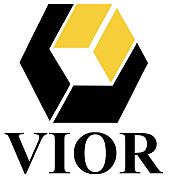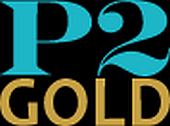 Chimata target’s tests produce 7.08% Li2O concentrate
Chimata target’s tests produce 7.08% Li2O concentrate
2018-04-17 12:34 ET – News Release
Mr. Richard Groome reports
CHIMATA ZIMBABWE LITHIUM COMPANY ( MAURITIUS ) ( ” ZIM ” ) COMPLETES HEAVY LIQUID SEPARATION AND MAGNETIC SEPARATION TEST WORK PRODUCING 7.08% Li2O CONCENTRATE
Chimata Gold Corp. and Zimbabwe Lithium Company have completed a second round of preliminary heavy liquid separation (HLS) and magnetic separation testwork on the coarse material fraction from grab samples taken at its Kamativi lithium tailings project located in Zimbabwe. Concentrate produced during the scoping testwork campaign was 7.08 per cent Li2O. HLS testwork was completed by SGS South Africa Pty. Ltd., a world-leading inspection, verification, testing and certification company located in South Africa.
Heavy liquid separation testwork summary
Seven samples associated with the testwork conducted at SGS were taken from a number of different grab sample locations across the surface of the tailings deposit, with the material being composited and submitted for HLS testwork. This preliminary testing is provided by the company for information purposes only, is not representative of lithium recovery on the project and is not representative of any economic mineralization on the project.
Upon receipt, the sample was classified at 425 microm, with the coarser fraction serving as feed to the HLS testwork. The mass yield and lithium distribution across the fractions is presented in the following table, with lower mass yield and higher lithium deportment resulting in an upgrade in Li2O content in the coarse fraction.
COARSE AND FINE FRACTIONS; MASS SPLIT, LI2O GRADES, DISTRIBUTIONS
Head feed Li2O grade (%) Li2O distribution (%) Mass split (%)
0.72 100 100
Plus 425 metres 0.853 55.1 46.4
Minus 425 metres 0.601 44.9 53.6
The coarse material fraction was subjected to HLS at various predefined specific gravities (SG) starting at an SG of 2.7 and concluding at an SG of 3.3 (incremental SG steps of 0.1). Where relevant, data is plotted as a function of separating SG or density and therefore curves do not include the effect of the material generated in the floats fraction at a density of 2.7. Cumulative data is recorded from the heavier SG classes proceeding toward the lighter, therefore the cumulative curves should be considered from right to left.
Specification of a cut point at a separating SG of 2.9, results in the production of a concentrate containing a calculated grade of 6.11 per cent Li2O, at a Li2O recovery of 74.85 per cent and an overall product yield or mass recovery of 10.22 per cent.
With reference to previous mineralogical studies completed on the material, the lithium species in the low-SG floats is largely in the form of poorly liberated spodumene grains, in addition to less dense lithium species such as petalite and cookeite. The iron containing lithium species zinnwaldite is also likely to be present. Therefore, these species account for much of the total Li2O loss of 25.15 per cent at a separating SG of 2.9.
Scoping magnetic separation testwork summary
Following the completion of the HLS testwork, a concentrate sample was constituted from the various SG faction samples, starting at the floats sample at SG 3 and ending with the sinks sample at SG 3.3. The concentrate sample was subsequently subjected to dry magnetic separation testwork; this for the purpose of reducing the iron content in the concentrate. The HLS testwork comprises rougher and cleaner stages. Assays associated with the various fractions are presented in the following table.
The data illustrates that removal of some iron bearing species may be achieved, as evidenced by the decrease in iron grade associated with the feed material, to 0.26 per cent in the cleaner non-magnetic fraction. The decrease in product mass, coupled with minimal loss of lithium bearing material to the magnetic fraction, results in an increase in Li2O grade observed in the non-magnetic fractions.
MAGNETIC SEPARATION MATERIAL FRACTION LI2O AND FE GRADES Material fraction Li2O grade (%) Fe grade (%) Rougher feed 6.848 0.83 Rougher non-magnetics 7.127 0.45 Rougher magnetics 1.376 9.96 Cleaner non-magnetics 7.084 0.26 Rougher feed (calculated) 6.839 0.926
Chimata is very encouraged with the results seen in this scoping testwork campaign, and is looking forward to the completion of the continuing drilling program and completion of further detailed metallurgical testwork.
Alain Moreau, PGeo, director of Chimata, a qualified person as defined by National Instrument 43-101 — Standards of Disclosure for Mineral Projects, has approved the scientific and technical disclosure in this press release.
http://chimatagoldcorp.com/news/






















